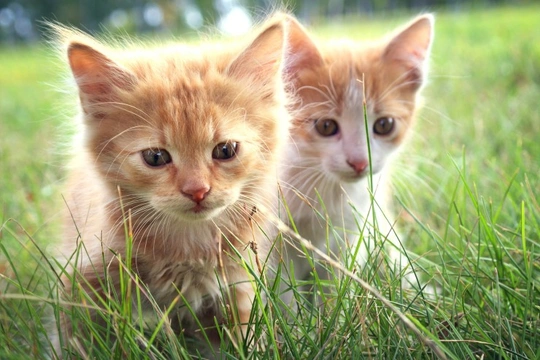
Identifying intestinal worms in cats
It is important for all cat owners to keep their cats protected from worms, by administering a good quality, veterinary approved treatment every three or so months. Generally, eradicating worms in cats is as simple as this, assuming that you use the appropriate product and administer it correctly, but in some situations cats can and do still have worms despite regular worming, and knowing how to identify the different types of worms can help you to suss out why, and deal with the problem.
In this article, we will cover the basics of how cats get worms and how de-worming treatments work, and look at some of the most common intestinal worms that can affect cats, and how to identify them. Read on to learn more.
How do cats catch worms?
There are a whole range of different ways in which cats can catch worms, and generally, it is the eggs or larvae of worms that are transmitted, rather than fully grown adult worms themselves.
Worms can be present in cat faeces, and so sharing a litter box or using the same area of the garden for toileting as another cat uses can spread worms, as can simply walking over ground that is infected with worm larvae or eggs. Cats can catch worms from areas that dogs toilet in as well, and as cats are fastidious groomers, when they lick their fur and paws after walking over the ground, they are transferring larvae and eggs into the digestive system, where the worms ultimately set up home.
Fleas also transmit worm larvae, and so a flea infestation and a worm infestation will often go hand in hand. Finally, one of the most common ways for cats to catch worms is if they catch and eat small prey such as rats and mice, as these are usually infested with worms themselves.
How do cat wormers work?
Unlike cat flea treatments that are designed to offer protection for several weeks at a time, cat wormers do not provide ongoing protection, but they do eradicate the worms, larvae and eggs already present. However, a cat can potentially contract worms once again just a few days after worming, but administering wormers is usually staggered at three monthly intervals, as even if the cat does pick up worms after treatment, the worm count is unlikely to grow large enough to pose a problem within this length of time.
However, cats that hunt prolifically and eat a lot of wildlife like mice may need to be wormed more regularly, in order to fully protect them.
Different types of intestinal worms
There are five types of intestinal worms that commonly affect cats-while there are also a few other less well known types too, these are uncommon in cats, and will be eradicated with the appropriate wormer, along with other forms of worms too.
All of the five main types of intestinal worms that can affect cats are transmitted in the same manners, and can also be passed to dogs and people.
Tapeworms
Tapeworms are possibly the most well-known of all of the intestinal worms, and can potentially grow to well over half a metre long! However, tapeworms are constructed of segments, and these individual segments are much smaller, just a few mm long each, and these are what you are most likely to spot in the faeces when they break off if your cat has an infestation.
Tapeworms can potentially make your cat very sick, so if you spot any signs of tapeworms in your cat’s faeces, treat them with a de-worming product as soon as possible.
Roundworms
While tapeworms are generally better known and more talked about than roundworms, roundworms are in fact more common in cats as a whole.
Roundworms can grow up to several cm long, and are usually white or cream in colour, but can also be beige. A heavy roundworm infestation is apt to lead to the typical appearance of an infestation, which includes weight loss accompanied by a large pot belly.
Threadworms
Threadworms are tiny, usually only growing to a couple of mm long, which makes them virtually impossible to see in faeces. Threadworms usually reside in infected ground, where they are picked up on the cat’s paws, and they then burrow through the skin and set up home inside of the body. As well as digestive upsets, threadworms may also reside in the lungs or other areas of the body, which will produce associated symptoms, and they may also lead to soreness and inflammation in the areas where they burrowed under the skin.
Whipworms
Whipworms have one thin end and one wide end, making them look a little bit like a riding whip, hence the name! They can grow up to 5cm long and are white or cream in colour, and can lead to sickness and digestive upset if present in large numbers.
Hookworms
Hookworms grow up to 2cm long, and are pinkish-white or beige in colour. They have hooks at the head end that allows the head to burrow into your cat’s intestinal wall, once again, leading to loss of condition and digestive upsets.



